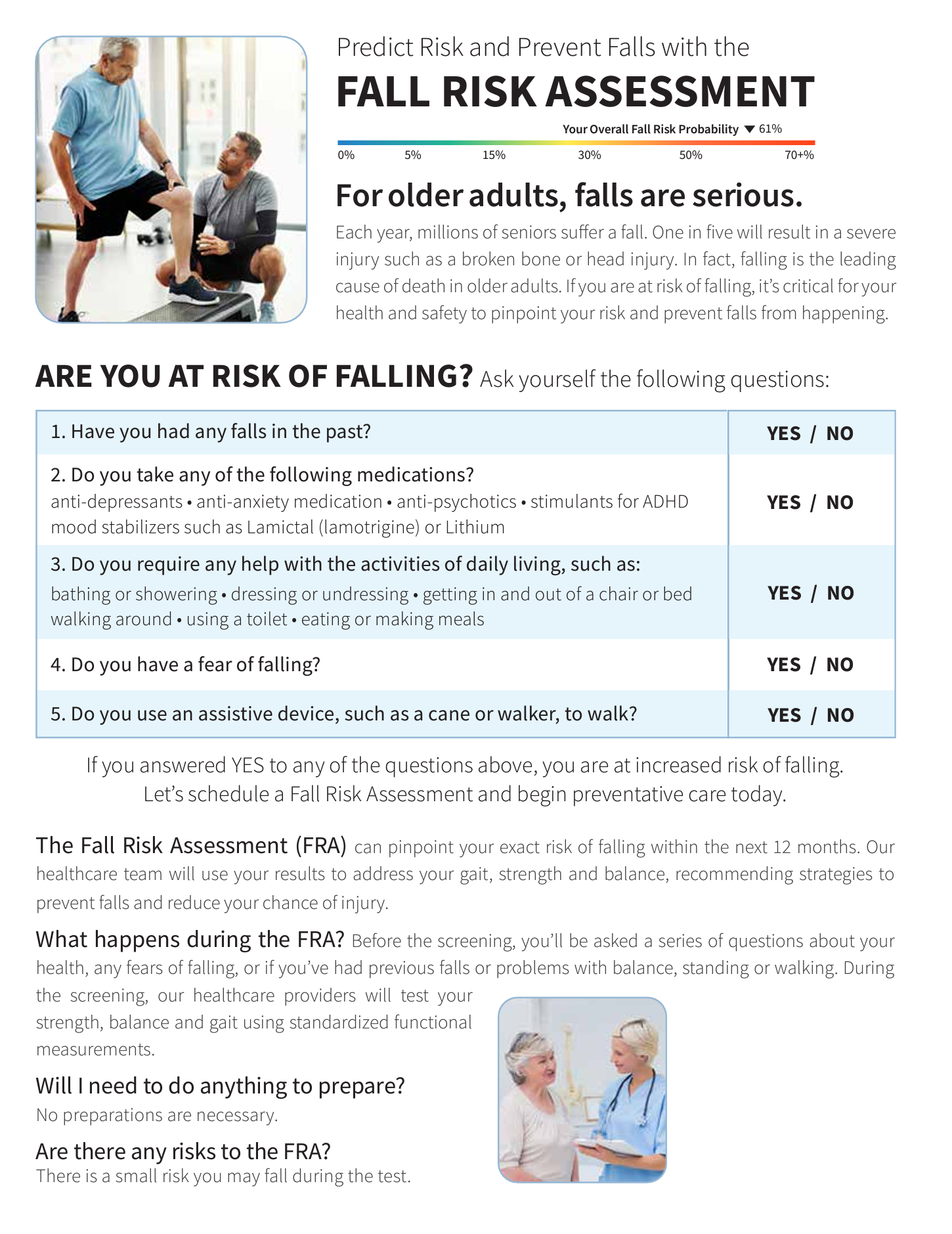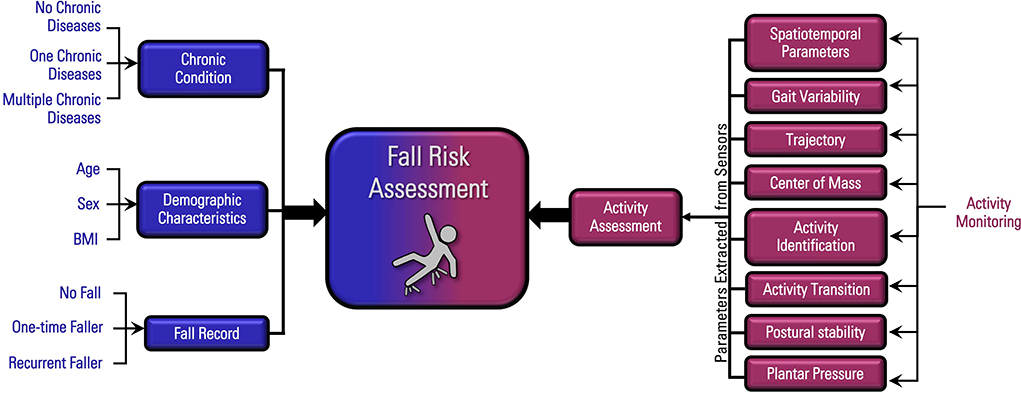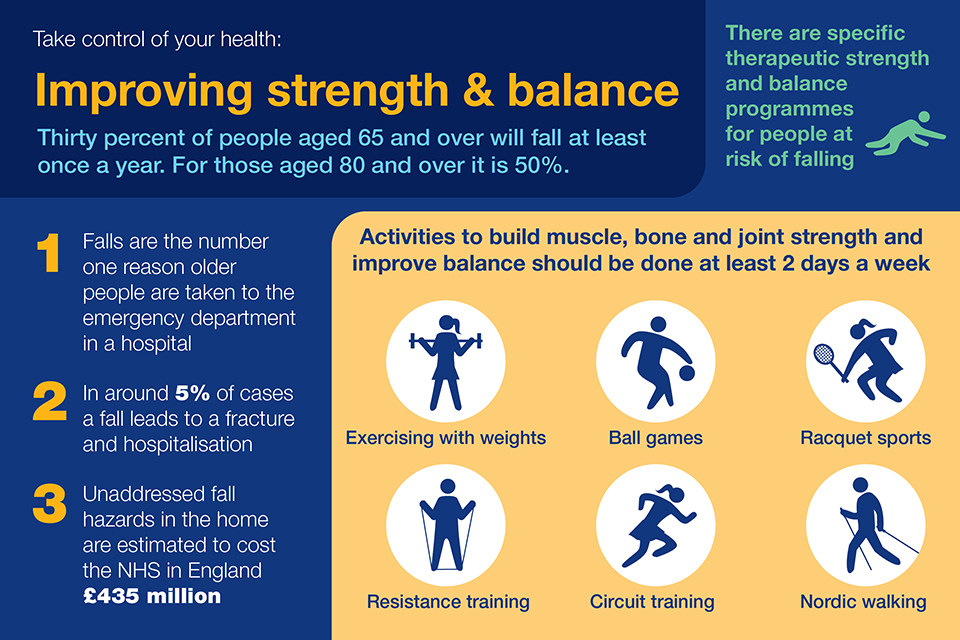Getting My Dementia Fall Risk To Work
Table of ContentsGetting The Dementia Fall Risk To WorkGetting My Dementia Fall Risk To WorkThe Greatest Guide To Dementia Fall RiskFacts About Dementia Fall Risk Uncovered
An autumn risk assessment checks to see just how likely it is that you will certainly fall. It is mainly done for older grownups. The assessment usually includes: This consists of a collection of concerns about your total wellness and if you have actually had previous drops or problems with equilibrium, standing, and/or walking. These tools check your strength, equilibrium, and gait (the means you stroll).STEADI consists of testing, analyzing, and treatment. Treatments are referrals that might minimize your risk of dropping. STEADI includes three actions: you for your threat of dropping for your risk elements that can be enhanced to try to avoid falls (for instance, equilibrium problems, impaired vision) to decrease your threat of dropping by utilizing reliable techniques (for instance, supplying education and learning and resources), you may be asked several questions consisting of: Have you fallen in the previous year? Do you feel unsteady when standing or strolling? Are you stressed over dropping?, your supplier will certainly evaluate your stamina, balance, and stride, utilizing the following autumn analysis devices: This examination checks your gait.
You'll rest down again. Your supplier will check for how long it takes you to do this. If it takes you 12 secs or even more, it might suggest you are at greater threat for an autumn. This examination checks stamina and balance. You'll being in a chair with your arms went across over your chest.
Relocate one foot midway onward, so the instep is touching the large toe of your other foot. Move one foot fully in front of the other, so the toes are touching the heel of your other foot.
6 Easy Facts About Dementia Fall Risk Explained
Many drops take place as a result of multiple adding aspects; therefore, managing the risk of dropping begins with identifying the variables that contribute to fall danger - Dementia Fall Risk. Some of one of the most appropriate risk aspects consist of: History of prior fallsChronic medical conditionsAcute illnessImpaired stride and equilibrium, lower extremity weaknessCognitive impairmentChanges in visionCertain risky medicines and polypharmacyEnvironmental variables can additionally increase the threat for drops, consisting of: Poor lightingUneven or harmed flooringWet or unsafe floorsMissing or damaged handrails and get barsDamaged or poorly fitted devices, such as beds, wheelchairs, or walkersImproper usage of assistive devicesInadequate guidance of the people living in the NF, including those that exhibit hostile behaviorsA successful autumn danger management program needs a thorough professional evaluation, with input from all members of the interdisciplinary team

The treatment strategy should likewise include interventions that are system-based, such as those that promote a risk-free setting (suitable lighting, hand rails, order bars, and so on). The performance of the treatments must be examined regularly, web and the treatment plan revised as necessary to mirror modifications in the fall danger evaluation. Carrying out a fall risk monitoring system utilizing evidence-based ideal practice can reduce the prevalence of drops in the NF, while limiting the possibility for fall-related injuries.
Facts About Dementia Fall Risk Revealed
The AGS/BGS guideline advises evaluating all grownups matured 65 years and older for fall danger yearly. This screening includes asking clients whether they have dropped 2 or even more times in the past year or looked for medical interest for a loss, or, if they have not fallen, whether they really feel unstable when strolling.
People who have fallen when without injury needs to have their equilibrium and gait examined; those with stride or equilibrium irregularities ought to receive extra evaluation. A history of 1 fall without injury and without gait or balance problems does not warrant additional evaluation past continued yearly fall threat testing. Dementia Fall Risk. A loss threat analysis is required as component of the Welcome to Medicare examination

9 Simple Techniques For Dementia Fall Risk
Recording a falls background is one of the top quality indications for fall prevention and monitoring. Psychoactive medications in particular are independent predictors of falls.
Postural hypotension can frequently be reduced by reducing the dose of blood pressurelowering medicines and/or quiting drugs that have orthostatic hypotension as a negative effects. Use above-the-knee support hose and copulating the head of the bed boosted might also minimize postural decreases in high blood pressure. The imp source advisable aspects of a fall-focused health examination are displayed in Box 1.

A pull time higher than or equal to 12 secs recommends high fall risk. The 30-Second Chair Stand examination analyzes lower extremity stamina and balance. Being unable to stand from a chair of knee height without using one's arms suggests increased autumn risk. The 4-Stage Equilibrium examination examines static equilibrium by having the client stand in 4 positions, each gradually a lot more challenging.